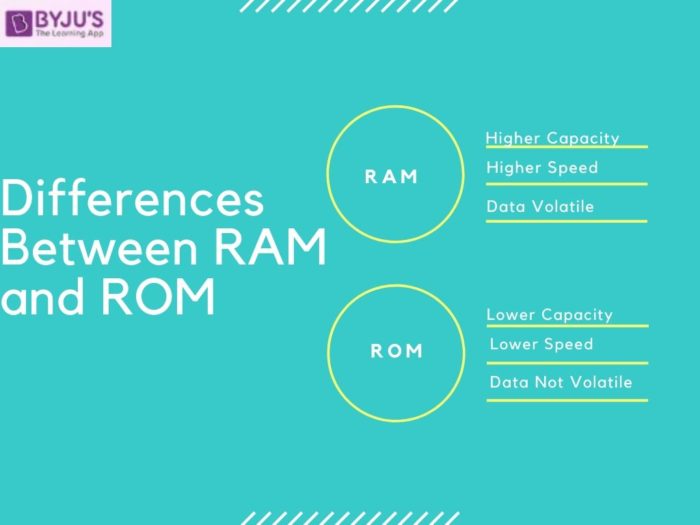The difference between RAM (Random Access Memory) and ROM (Read Only Memory) is explained here in detail. RAM is a form of computer memory that can be read and changed in any order, typically used to store working data and machine code.
Difference between RAM and ROM – UPSC Notes
Download PDF Here
ROM is a type of non-volatile memory used in computers and other electronic devices. The difference between RAM vs ROM will help in understanding the basics better and know their comparisons thoroughly.
Aspirants would find this article very helpful while preparing for the IAS Exam.

The major differences between RAM and ROM are:
| RAM | ROM |
| Definition of RAM is Random Access Memory | Definition of ROM is Read-only Memory |
| Random Access Memory (RAM) is expensive when compared to ROM | ROM is cheaper when compared to RAM. |
| The speed of Random Access Memory (RAM) is higher when compared to ROM | The speed of Read-only Memory (ROM) is slower when compared to RAM. |
| Random Access Memory (RAM) has a higher capacity when compared to ROM | ROM has a lower capacity compared to RAM |
| Data in RAM can be modified, erased, or read. | Data in ROM can only be read, it cannot be modified or erased. |
| The data stored in RAM is used by the Central Processing Unit (CPU) to process current instructions | The data stored in ROM is used to bootstrap the computer. |
| Data stored on RAM can be accessed by the Central Processing Unit. | If the Central Processing Unit (CPU) needs to access the data on ROM, first the data must be transferred to RAM, and then the Central Processing Unit (CPU) will be able to access the data. |
| Data of RAM is very volatile, it will exist as long as there is no interruption in power. | Data present in Read-Only Memory (ROM) is not volatile, it is permanent. Data will remain unchanged even when there is a disruption in the power supply. |
These are the main differences between RAM and ROM. The differences given in the above table can help the UPSC Civil Service Exam aspirants to answer any related questions easily in the exams.
After learning about the RAM and ROM difference, visit the below-given links to know the details of the National Cyber Security Policy, Cybercrime, Cybersecurity, and Artificial Intelligence thoroughly. Also, visit the link on the Weekly Current Affairs Quiz.
- Current Affairs Quiz
- National Cyber Security Policy
- Cybercrime: Definition, Laws in India
- Cyber Security – Definition, Cyber Attacks, Need and Laws
- Artificial Intelligence – Science and Technology
- Complete List of Difference between Articles – History, Polity, Economics, Geography and more
Difference between RAM and ROM – UPSC Notes
Download PDF Here
FAQ about RAM (Random Access Memory) and ROM (Read Only Memory)
What are the types of ROM (Read Only Memory)?
What are the types of RAM (Random Access Memory)?
What is ROM used for?
Where is RAM stored?
What is stored in ROM??
The above details would help candidates prepare for UPSC 2024.
Related Links
| IAS Salary | Static GK |
| Project Tiger in India | FCRA Act |
| MAT Tax | Digital India Project |
| Total Amendments in the Indian Constitution | Bal Gangadhar Tilak Books |


Comments